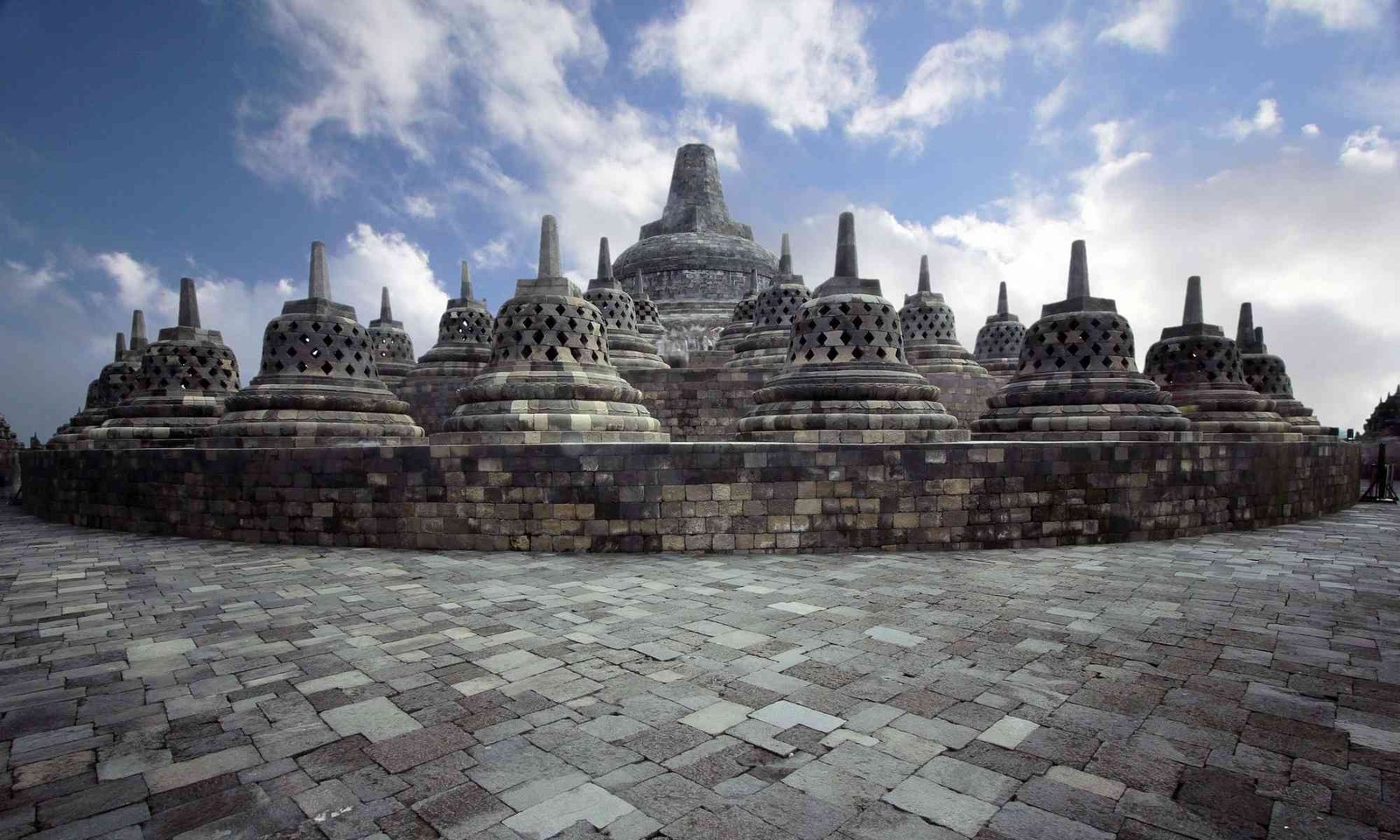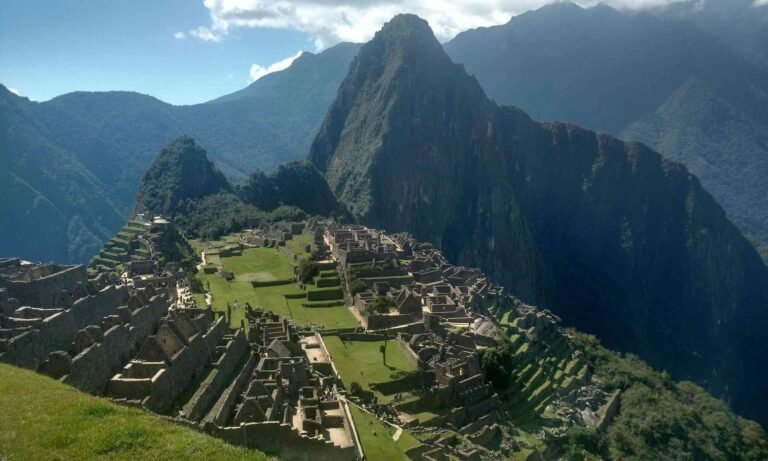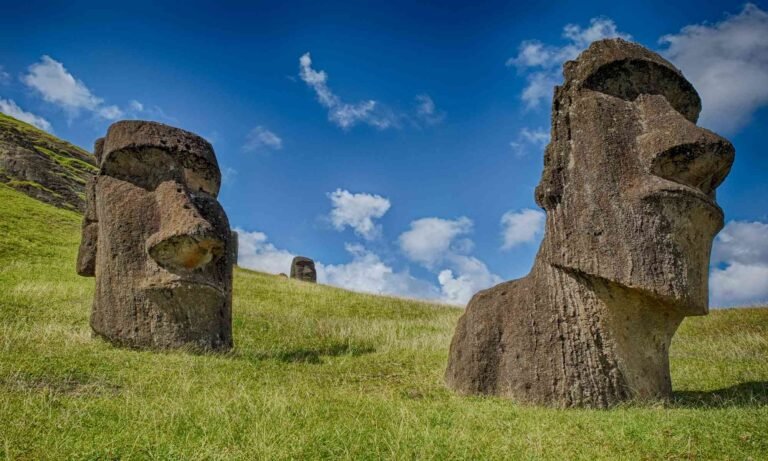Borobudur is a monumental testament to Indonesia’s rich cultural and historical legacy. Constructed in the 9th century during the reign of the Syailendra Dynasty, this renowned Buddhist temple is characterized by its intricate design and profound spiritual significance. Built as a Mahayana Buddhist shrine, Borobudur exemplifies the architectural prowess of ancient Javanese civilization and serves as a pivotal site for the dissemination of Buddhist teachings throughout the region.
The temple is a remarkable structure, embodying a distinctive blend of indigenous and Indian influences in its design. Composed of over two million volcanic stone blocks, Borobudur stands eight stories high, culminating in a central dome surrounded by 72 Buddha statues seated within perforated stupas. The layout of the temple represents a cosmic mandala, guiding pilgrims on a spiritual journey through its various levels, symbolizing the path to enlightenment.
Borobudur played a significant role in the spread of Buddhism in Southeast Asia, influencing the development of religious and cultural practices across the region. Its significance was further underscored by the historical context of its construction, which coincided with a flourishing era of trade and cultural exchange along the maritime Silk Road. However, by the 14th century, as Islam began to gain prominence in the archipelago, Borobudur fell into a state of neglect, leading to its gradual obscurity until its rediscovery in the 19th century.
The temple’s rediscovery by British lieutenant governor Sir Thomas Stamford Raffles prompted significant restoration efforts, which have continued into modern times. Today, Borobudur is recognized as a UNESCO World Heritage site, celebrated not only for its architectural grandeur but also for its profound cultural importance as a symbol of Indonesia’s diverse heritage and its role within the broader historical narrative of Southeast Asia. As visitors flock to this remarkable site, they engage with the echoes of a bygone era, creating a lasting connection to the past.
UNESCO World Heritage refers to sites recognized for their outstanding cultural or natural significance to humanity. These locations are protected under the World Heritage Convention, adopted by UNESCO in 1972, to ensure their preservation for future generations. There are over 1,200 World Heritage Sites across 168 countries, including famous landmarks like The Great Wall of China, Machu Picchu, Angkor Wat, and the Grand Canyon.
These sites are categorized as cultural, natural, or mixed heritage, reflecting their historical, architectural, or environmental significance. UNESCO’s mission is to safeguard them from threats like climate change, urbanization, and mass tourism while promoting sustainable conservation.
Architectural Marvel: The Design and Structure of Borobudur
Borobudur, one of the largest Buddhist temples in the world, is an architectural masterpiece that has captivated visitors for centuries. The temple’s design is intricately structured with nine stacked platforms, each symbolizing a step in the spiritual journey towards enlightenment. The base consists of a square shape, while the upper layers transition into circular platforms, representing the transition from the earthly realm to the spiritual. This thoughtful design reflects Buddhist cosmology, illustrating the path from the material to the divine.
The construction of Borobudur employed volcanic stones that are abundant in the region, showcasing the ingenuity of ancient builders. These sturdy yet malleable materials have enabled the temple to endure the wear of time, weathering natural elements, and human intervention. The temple’s walls are adorned with over 2,600 intricate relief carvings that depict various narratives from the Jataka tales, illustrating ethical lessons and the life of the Buddha. Each carving conveys profound philosophical meanings, reinforcing Buddhist teachings about compassion, virtue, and the cycle of life.
Engineering techniques utilized during the construction of Borobudur remain a remarkable aspect of the temple’s architecture. The builders demonstrated advanced knowledge in stone quarrying, precision placement, and structural integrity, allowing the temple to stand strong for over a millennium. The intricate drainage system incorporated into the design reflects an understanding of landscape harmony and functionality, ensuring the longevity of the structure even in the face of the tropical climate. This careful consideration of both aesthetic and practical elements in Borobudur’s architecture solidifies its status as a symbol of cultural and historical significance, demonstrating the intersection of artistry and spirituality within the Buddhist tradition.
Spiritual Significance: Borobudur as a Buddhist Pilgrimage Site
Borobudur stands as a monumental testament to the spiritual heritage of Buddhism, attracting pilgrims and tourists alike. As one of the largest Buddhist temples in the world, it serves as a revered pilgrimage site for many Buddhists globally, who visit not only to admire its architectural grandeur but also to partake in significant spiritual practices. The journey to Borobudur is often seen as an expression of devotion and a step towards enlightenment.
The rituals associated with visiting Borobudur are deeply rooted in Buddhist traditions. Pilgrims often engage in the sacred practice of walking the temple’s levels in a clockwise manner, symbolizing the process of spiritual ascent from the earthly realm to enlightenment. This journey is not merely a physical act; it is a meditative experience that encourages contemplation and reflection on one’s spiritual path. Each of the temple’s six square platforms is adorned with stunning relief panels depicting the life of the Buddha, serving as visual narratives that guide pilgrims through essential teachings.
One of the most significant events associated with Borobudur is the Vesak celebration, which marks the birth, enlightenment, and death of the Buddha. During this period, thousands of pilgrims gather to participate in rituals that include prayers, the lighting of lanterns, and the release of floating candles, symbolizing the light of Buddhist teachings. Such events transform the temple into a vibrant hub of devotion, bringing together individuals from diverse backgrounds united in their spiritual quest.
Testimonials from pilgrims illuminate the profound impact of visiting Borobudur. Many report feelings of deep connection and serenity, often describing their experience as transformative. For numerous individuals, standing in the shadow of the ancient stupa, surrounded by serene landscapes, becomes a catalyst for spiritual awakening. Borobudur’s design, embodying Buddhist cosmology, serves not only as a physical journey but also as a metaphorical passage towards spiritual enlightenment. The temple remains a cherished destination for those seeking to deepen their understanding of Buddhism and reinforce their faith.
Visitor Experience: Tips for Exploring Borobudur
When planning a visit to Borobudur, it is essential to consider the timing of your trip. The ideal periods to explore this magnificent temple are during the dry season, which runs from April to October. These months offer the best weather conditions for sightseeing. Early mornings are also highly recommended for visits, as you can experience a peaceful atmosphere with fewer crowds and cooler temperatures. Arriving at dawn allows visitors to witness the breathtaking sunrise illuminating the stupas and carvings, enhancing the overall experience.
- Explore the pics taken by me while visiting Borobudur
Understanding crowd dynamics is crucial for a pleasant exploration. Borobudur, being one of Indonesia’s most famous sites, attracts a significant number of visitors, especially during weekends and public holidays. To avoid large crowds, it is advisable to visit on weekdays. Consider purchasing entry tickets online in advance, which can save time and reduce stress upon arrival. Navigating the site can be easier with a guide or through guided tours. They provide valuable insights into the historical and cultural significance of the temple while enhancing your overall understanding of this UNESCO World Heritage site.
Your visit to Borobudur can be complemented by nearby attractions, such as the Mendut Temple and Pawon Temple, which are located just a short distance away. These sites offer additional insight into the rich cultural tapestry of the area. Accommodation options range from budget hostels to luxury resorts, catering to various preferences and budgets. Dining options are numerous, featuring traditional Indonesian cuisine that allows visitors to immerse themselves in local flavors while enjoying the unique ambience of the region.
Lastly, it is vital to adopt responsible tourism practices while exploring Borobudur. Preserving this cultural monument and its surroundings for future generations should be a priority for every visitor. Adhere to the site rules, refrain from littering, and be mindful of your surroundings. By taking these simple yet impactful steps, tourists can contribute to the ongoing preservation of Borobudur, allowing others to appreciate its wonders for years to come.
What’s More
The posts in My Blog feature reflective, story-driven pieces rooted in personal and societal insights.
The topics in My Interests explore abstract, philosophical ideas and their cultural and societal impact.
👁️ 6,480 Views


















